|
|
| |
Custom-Specific Time-of-Flight Spectrometers
|
|
MALDI Reflectron Spectrometer for Use
with Cryo Detector
|
|
(MPI f. Physik, Munich, Germany)
|
|
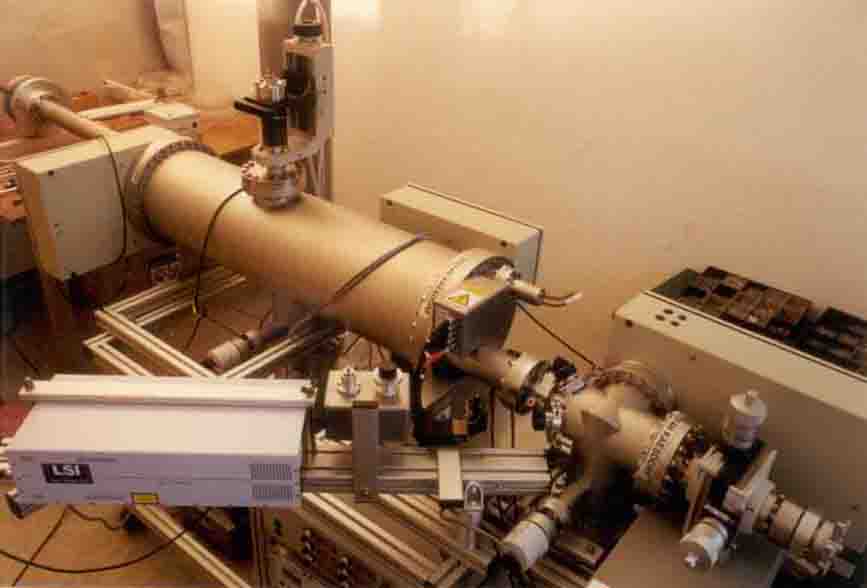
|
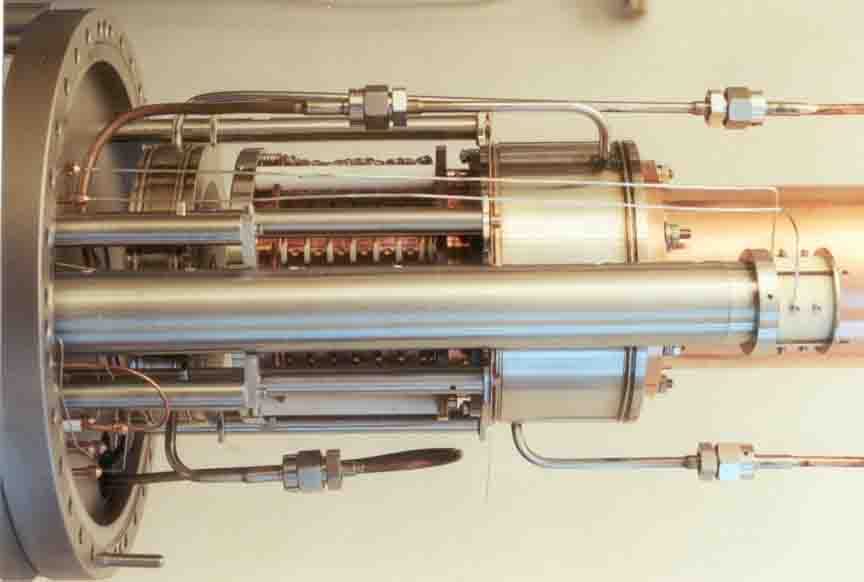
|
Overall view of spectrometer system
|
Liquid nitrogen cooled ion reflector
|
|
|
Features:
- Reflectron with two ion
reflectors for use with superconducting cryo detector
- MALDI ion source
- (folded) fieldfree
drift space with overall length > 4000 mm
- cryo detector sees only
cold surfaces, second ion mirrors is liquid nitrogen cooled
- additional mcp
detector, mounted on manipulator, can be inserted into time focus
between the ion mirrors
|
|
Linear TOF Spectrometer for Molecular Beam Studies |
| (CNRS Bordeaux, France) |
|

|
|
Features:
- linear TOF
spectrometer with ion source according to Wiley-McLaren
- detection of
collision
products of two molecular beams which cross under variable angle
inside the ion source and are ionised by laser
- ion source with
open design to avoid scattering of molecules
|
Linear TOF Spectrometer for Aerosol Studies |
| (Joint Research Center, Ispra, Italy) |
|
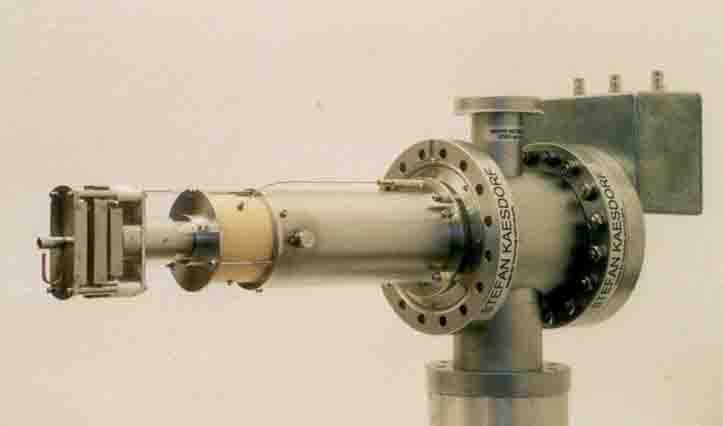
|
|
Features:
- linear TOF
spectrometer with ion source according to Wiley-McLaren
- bipolar setup
- ion source
optimised for aerosol studies
|
Reflectron with 5-Grid Ion Reflector
|
MPI f. Quantenoptik, Garching, Germany
|
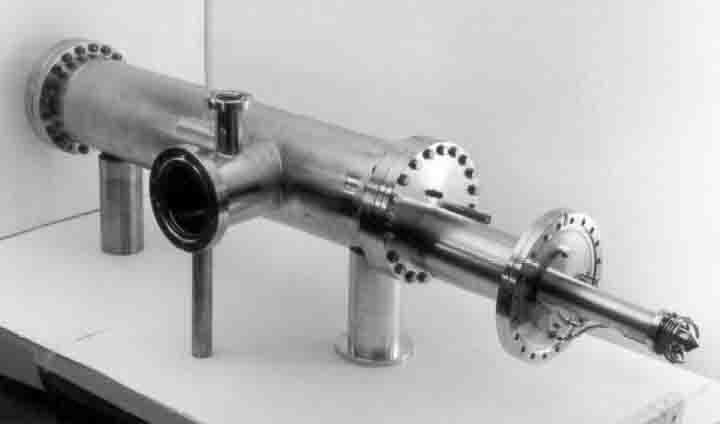
|

|
complete system
|
5-grid ion reflector
|
|
|
Features:
- reflectron with 5-grid
ion reflector for quantitative ion yield measurements using lasers of
extremely high intensity
- additional double grid
structure within a two-stage ion mirror allows to measure the energy of
the extracted ions with a resolution < 1%, corresponding to a
spatial resolution in the ionisation zone < 2µm i.e. it is
possible to measure the local ion yield inside the laser focus
- 8 kV postacceleration
for efficient heavy particle detection
|
|
Linear TOF Spectrometer for Desorption Studies
|
University of Vienna, Vienna, Austria
|
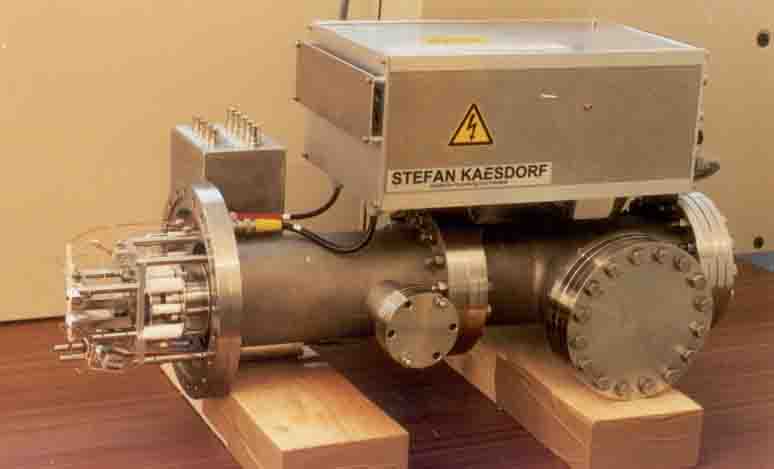
|
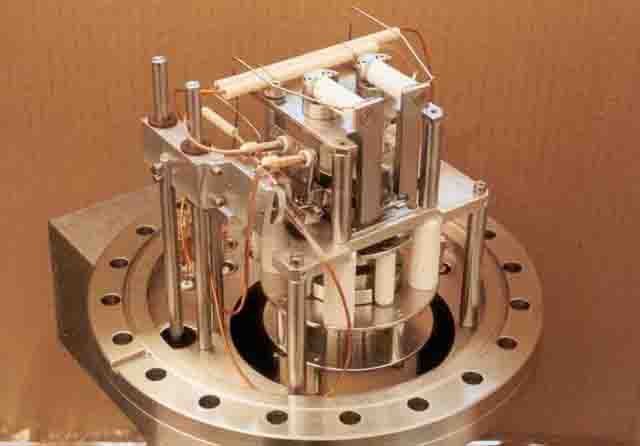
|
complete spectrometer system
|
ion source
|
|
|
Features:
- linear tof
spectrometer, tof axis orthogonal to direction of desorbing molecules
("orthogonal tof")
- detection of
ions produced directly in the desorption process or alternatively of
post-ionised desorbed neutrals
(electron impact or laser ionisation)
- 16 kV postacceleration
for efficient heavy particle detection
|
|
|
|
|
|